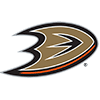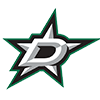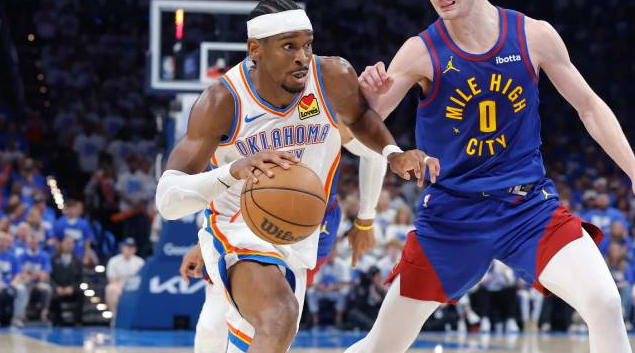Tradition vs. stat geek?
Last week I watched the baseball American League MVP vote with interest. It was one of the most intriguing MVP votes in years, as there were two dominant MVP choices that each had huge support to win. Miguel Cabrera became the first player in 45 years to win his league's Triple Crown, leading the American League in home runs, batting average, and runs batted in (RBI). Mike Trout, on the other hand, absolutely dominated the newer sabermetrics stats that Billy Beane made famous in Moneyball. It ended up in a situation where, according to baseball writer Tim Kurkjian, every baseball player or manager that you asked said that Cabrera should have been the MVP "and it's not even close," while every baseball front office member said that Trout should have been the MVP and, again, "it's not even close."
As you might expect, this race became heated . . . especially among the "traditional" baseball fan that doesn't want to have their game corrupted by all of these numbers (a sentiment I heard articulated on the Jonathan Coachman radio show on ESPN) vs. the "new school" baseball fan that can't understand why people wouldn't want to have the most comprehensive information with which to make judgments. It eventually boiled down to the "back of the baseball card" guy vs. "stat geek," with the traditional guy getting to celebrate Cabrera's MVP win over the stat geek-supported Trout.
Basketball has been going through a similar statistical revolution
Tradition vs. stat geek?
Last week I watched the baseball American League MVP vote with interest. It was one of the most intriguing MVP votes in years, as there were two dominant MVP choices that each had huge support to win. Miguel Cabrera became the first player in 45 years to win his league's Triple Crown, leading the American League in home runs, batting average, and runs batted in (RBI). Mike Trout, on the other hand, absolutely dominated the newer sabermetrics stats that Billy Beane made famous in Moneyball. It ended up in a situation where, according to baseball writer Tim Kurkjian, every baseball player or manager that you asked said that Cabrera should have been the MVP "and it's not even close," while every baseball front office member said that Trout should have been the MVP and, again, "it's not even close."
As you might expect, this race became heated . . . especially among the "traditional" baseball fan that doesn't want to have their game corrupted by all of these numbers (a sentiment I heard articulated on the Jonathan Coachman radio show on ESPN) vs. the "new school" baseball fan that can't understand why people wouldn't want to have the most comprehensive information with which to make judgments. It eventually boiled down to the "back of the baseball card" guy vs. "stat geek," with the traditional guy getting to celebrate Cabrera's MVP win over the stat geek-supported Trout.
Basketball has been going through a similar statistical revolution to baseball over the last decade or so, and I found myself thinking about this issue on Sunday when I watched the Celtics play the Pistons. As many of you know, Rajon Rondo is in the midst of a historic streak of double-digit assists games that extends back to last season. He currently trails only Magic Johnson and John Stockton for having the longest such streak in NBA history, and both of those streaks are very much within striking distance for Rondo. In fact, if he continues his own double-digit assist streak through the New Year, he'll break Magic's record and hold the longest double-digit assist streak in NBA history.
As you might expect, this streak has been generating a lot of attention. In the television studios, whenever the Celtics come up, Rondo's streak is the first thing mentioned. And much like Cabrera in baseball, it is the "traditional" basketball fans and the former players that gush the most about Rondo's streak and just how special it is.
But on Sunday against the Pistons, for all intents and purposes Rondo's streak was going to come to an end. He only had six assists with six minutes left in the fourth quarter of a game in which the Celtics were getting blown out. At that point, the Celtics called a time-out, and something interesting happened. Generally, this would be the timeout when the losing team might start pulling starters to keep them from getting hurt in the second game of a back-to-back when they had no chance of winning. Instead, the Celtics not only kept their starters in, but they started running the same pick-and-roll set over and over with Rondo dribbling the ball and not passing it until he saw a teammate with a chance to score. The result? Rondo assisted on four of the last six Celtics buckets, all of them coincidentally to Jared Sullinger, and he gets assist number 10 with 51 seconds left in a game in which his team is down by 21 points.
This was my Twitter (@ProfessorDrz) response immediately after the game: "That was kind of a cheap way to extend Rondo's assist streak . . . kinda left a bad taste in my mouth." Afterward, the Celtics didn't even deny that they were specifically trying to get Rondo his 10 assists. The most interesting quote to me came from the Celtics' coach:
"Why not?" coach Doc Rivers asked. "The press keeps talking about it, so I figured I would give him a shot at it. The funny thing was that the harder we tried, the worse we got at it."
The interesting part is not only that Doc admitted to the stat padding, but the end of the statement as well . . . that the more the team tried to adjust things to let Rondo keep his streak, the worse the team played. And it was evident in the new-school +/- stats from that game, in which Rondo had, by far, the worst +/- of the five Celtics starters at minus-17 (the other four averaged a minus-6.3 that night).
Which ultimately brings me full-circle back to the question of "traditional fan" vs. "stat geek." It seems to me that this characterization of the two positions is misleading, because the traditional guy is ALSO a number's geek. Home runs, RBI, batting average, assists . . . these are all numbers that we keep, statistics that the traditional guy tends to know backwards and forwards and uses to determine how good a player is. Cabrera would have had no shot at the MVP if the Triple Crown stats weren't emphasized, and Rondo's streak wouldn't exist if we didn't keep track of assists. No, the difference between the "old school" and the "new school" is just a matter of WHICH numbers are emphasized, not WHETHER numbers are important.
And with that dynamic in mind, I once again find myself firmly on the side of the newer stats. Not because newer means better, but because the search to find the best way to describe something almost necessarily produces better results than letting an old way stagnate. And in this Rondo example we see one way in which a newer stat like +/- is needed: you can't stat-pad +/-. If +/- is a way to measure how well a team plays with a certain player on the court, then the only way to stat pad would be to make your team play better. That type of stat padding is one in which everyone wins, not just the individual.
These days we still care more about the traditional stats. As a fantasy owner that has Rondo on my team I rejoiced his padded assists. And since so many of the voters are more traditional fans that enjoy an easy narrative, Rondo's assist streak will get him into the MVP conversations that his +/- stats would never let him enter. So for now, his stat padding is all good, but things keep evolving. And a few years down the line, don't be surprised when Trout is the one winning those MVP trophies instead of the traditional slugger . . . and perhaps your roto basketball league will have a category for +/- that makes even that casual fantasy owner into more of a new-fangled stat geek.
Around the League: Movers in the RotoWire Fantasy Basketball Cheat sheet
The Thanksgiving holiday marks a nice mini-break early in the NBA season, as no games were scheduled on Thursday. So, for the Around the League section this week, I thought I'd take a look at some of the players that have been early movers up or down the RotoWire Cheat Sheet.
Kevin Love, up: Love never fell that far down the Cheat Sheet since it was always expected that he would be back in December. However, his early return and the explosive 34-point, 14-rebound debut have shot him back up to No. 3 in the rankings with the legitimate chance to move to No. 1 at some point.
Andrew Bynum, down: The latest news on Bynum has one orthopedic surgeon speculating that Bynum is dealing with osteochondritis dessicans lesions in his knee. Don't worry about the name, the upshot is that, if true, this injury requires 4-to-6 months to heal WITHOUT surgery, and a full year to recover WITH surgery. Bynum isn't expected to learn for sure whether he has this until December, but if he does have it then his best-case scenario is a return in March, and his worst case is a return next season. Such a prognosis has Derrick Rose completely out of the top-200 on the Cheat Sheet, so the strong suggestion that Bynum may be on a similar time scale has pushed him down into the 130s with more fall to come if the diagnosis is confirmed.
Kobe Bryant, up: Kobe entered the year ranked in the 20s, and in last week's Hoops Lab I detailed how the Mike D'Antoni effect could potentially shuttle the influence to Steve Nash and away from Kobe. So why is he currently ranked in the top 10? Because, for one thing, Nash is still hurt, and the injury has lingered into the dreaded "indefinite" status. With Nash approaching 39 years of age, there's no definite guarantee that he'll be back anytime soon. And this is great for Kobe, who has been the one benefitting from having more point guard duties post-Mike Brown. Kobe has been averaging more than 27 points and almost seven assists over the past two weeks, and as long as Nash stays out, it will be Kobe that gets the D'Antoni boost.
Josh Smith, down: As I pointed out last week, Smith is on pace for the worst shooting season of his career. Even though I expect him to bounce back to some extent, I just couldn't keep him in the top 10 of the rankings with him shooting 40 percent from both the field AND the line.
J.R. Smith, up: Meanwhile, the other high-flying J. Smith has moved way up the rankings on the strength of his career-best pace shooting from the field and the line. The shooting will likely cool off some, but the most positive predictor for Smith is the increase in his minutes to over 33 per game. Smith's per-36 stats are actually pretty consistent with what he's done the last couple of years, but he's doing it on about 25 percent more minutes played . . . good enough to move him up into the top 40 on the Cheat Sheet.
Dwyane Wade, down: As I mentioned last week, the combo of LeBron James' ascension and Wade's touchy injuries have him currently falling down the rankings. The Heat have a lot of scoring options in James, Wade, Chris Bosh, Ray Allen, and their assortment of shooters. If Wade isn't going to be running the show at least half of the time, the way he had previously been doing since James' arrival, he's not a strong enough 3-point shooter to absorb the loss of points and assists that come with his current off-the-ball roll.
Nicolas Batum, up: Batum is the biggest roto superstar that hardly anyone knows. We've ranked him higher than most over the last few years as his across-the-board game is sneakily roto-valuable, and his per-minute numbers have suggested that he has star potential. This season, he has been living up to that potential, maintaining (or even increasing) his per-minute averages while increasing his playing time up to almost 40 minutes per game. He's firmly in our current top 20 in the rankings, with upside if he continues to maintain his current pace.
Ty Lawson, down: Lawson had earned a spot in the top 20 entering the season based off of his stellar run last season, but he struggled mightily early on this year. Those struggles came to a head when he threw up a goose egg last week against the Heat, going 0-for-7 from the field with no free-throw attempts. Lawson had a good game going into the holiday with 18 points and nine assists Wednesday, so hopefully he is on the verge of turning it around, but based off his performance in the first month, he had to slide.
Kevin Martin, up: Martin has been thriving in the third-option role that used to be manned by James Harden in Oklahoma City. While Martin isn't nearly the playmaker that Harden was, he is just as good of a shooter and excellent at moving without the ball. The result thus far has been a monstrously efficient pace, with Martin currently shooting almost 50 percent from the field to go with 95 percent from the line and 54 percent from beyond the arc. His per-minute scoring rate is right in line with what he's done in recent years, but he's increased his 3-point volume, and if he maintains his efficiency, he's going to move up even further from his current slot in the top 40.
Ersan Ilyasova, down: Ilyasova finished last season ranked in the top 50 on the Yahoo! Player rater and came into this year even higher than that on our Cheat Sheets. He was a nightly double-double threat with great percentages that averaged almost a trey, a block, and a steal per night last season. This season his play has fallen through the floor, as the glut of big men in Milwaukee has cut into his minutes, and his per-minute averages have fallen off as well. Barring injury, he should bounce back some as the year goes along, but he's currently dropped to 75 on our list with more room to fall further if he doesn't snap out of it.
Kemba Walker, up: This summer when I did the season projections I looked at Walker's per-36 minute numbers as a rookie (16.1 points, 5.8 assists, 4.7 rebounds, 1.4 three-pointers, 1.2 steals) and projected him to be even better than that as a sophomore when he'd get those minutes. But my projection had him so high in the rankings that I went in and scaled back a bit to be more conservative. Instead, a month into the year, it appears that I should have been even more aggressive as he's actually improved on his per-36 minute numbers to date while averaging 37 minutes per game. He is currently slotted in our top 60, and this too may be too conservative.
Tyreke Evans, down: Evans was a 20-5-5 guy as a rookie with a season that was mentioned in the same breath with legendary rookie seasons like the ones LeBron James and Oscar Robertson had. When his averages dropped to 18-5-5 as a sophomore, I thought it was just a slump and he'd bounce back as a third-year player. He then dropped even further to 16.5-4.5-4.5 last season, making him one of my bigger prediction whiffs. This year I tried one more time to suggest that he'd bounce back, but a month in he's at 13-5.1-3.4. I don't know why Evans just keeps regressing, but at this point, I have to say that he just isn't what I thought he was unless/until he shows signs of recovery.
New Additions
Alonzo Gee (31 % owned in Yahoo! Leagues): Gee is a solid double-digit scorer who'll grab about five boards per game, but what makes him rosterable is that he's upped the 1.3 steals that he averaged last season to 1.9 steals thus far this year.
Matt Barnes (8% owned): Barnes has stepped in for the injured Caron Butler and scored more than 15 points with eight boards, 2.7 steals, and a 3-pointer over the last week. These numbers, especially the boards and steals, aren't sustainable, but he could produce the same line as Gee given regular starters minutes.
Jermaine O'Neal (4% owned): We have an O'Neal sighting! I doubt that I'll be picking up O'Neal anytime soon, as he's just too brittle, but it is worth noting that he's averaging 13 points with three combined steals/blocks in the week since he's started getting consistent playing time for the Suns.
Tiago Splitter (4% owned): The much more intriguing big man option is Splitter, who I've had on my "potential breakout" radar for a couple of years now. Splitter was a star for his national team and has definite double-double NBA talent, but he's had a disappointing start to his NBA career. And has been unable to carve out consistent minutes next to Tim Duncan in the Spurs frontcourt. Splitter exploded for 23 points in 26 minutes against the Celtics on Wednesday, but we have to temper that due to the Celtics' lack of big men. That said, it was still an encouraging performance and enough to get Spliiter back onto my radar as a potential breakout guy again this season.
Keeping up with the Professor
If you're interested in my takes throughout the week, you can follow me on Twitter @ProfessorDrz. Also, don't forget that you can catch me on the radio on Rotowire Fantasy Sports Today with Chris Liss and Jeff Erickson on XM 87, Sirius 210.


























